Damp, condensation and mould advice
Damp, condensation, and mould are common problems in many homes. Older houses often have more issues, but rented homes can be worse. Sometimes the problem is small, like a bit of mould or stained wallpaper behind a wardrobe or in the corner of a room. Other times, it can be much worse, with mould growing on walls, inside wardrobes, and even on clothes, carpets, and furniture.
MOULD
Mould is a serious problem because it can harm your health.
Mould spores (tiny parts of mould in the air) can cause health problems like infections, asthma, allergies, and sinusitis.
Mould can make allergens, irritants, and sometimes even toxins that can affect people.
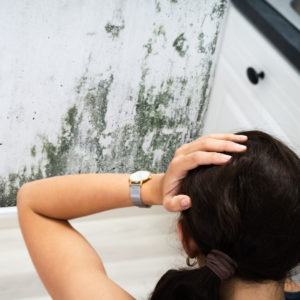
Condensation happens when warm air hits cold surfaces and makes moisture. This can lead to mould. Sometimes, condensation is caused by problems with the building, like poor insulation or no ventilation. But often, it’s caused by how people live in the home. For example, drying clothes inside, not opening windows, using no heating, or making steam from cooking and showering can all add moisture to the air.
If mould grows once, it can keep coming back.
Even years later, if the home becomes cold and damp again, the mould can grow back. This is because mould spores can stay in the home, waiting for the right conditions to grow again.
Older homes, especially those with solid walls and no wall insulation, are more likely to have condensation and mould problems, so it’s important to know how to reduce condensation in the home.
The main causes of mould:
- Water leaks – from windows, roofs, pipes, gutters, and flooding
- Water getting in through the walls (called penetrating damp)
- Rising damp – this happens when there’s no damp-proof layer in the walls or it’s not working well
- Wet or damp crawl spaces under the house
- Condensation – when the air’s warm, wet air touches cold surfaces
- Too much steam or water in the air from cooking, washing, bathing, or drying clothes indoors
- Not enough ventilation – when air can’t move around or escape
- Not enough heating – cold homes are more likely to get damp
- Not cleaning and drying properly after a flood or leak
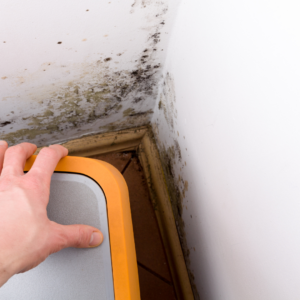
Where mould might appear:
- On walls under windows, especially in the corners
- On floors near toilets or under dishwashers
- On walls around cold-water pipes that have no insulation
- In the loft, near chimneys
- Near damaged or blocked gutters and downspouts
- On the bottoms of walls if the damp-proof layer is missing or covered by soil
- On exposed soil or standing water in crawl spaces
- On wooden beams or floors under the house
- Under boxes, carpets, or anything sitting on a damp floor
- In cracks or holes in walls or floors
- White chalky marks (efflorescence) – this shows water is getting in
Mould from condensation typically appears in:
Bathrooms
Bathrooms are a common place for mould because of all the steam from showers and baths.
Look for mould in these spots:
- On the ceiling above the bath or shower
- On windows, sills, and frames
- Under or behind the toilet and water tank
- On outside walls and tiles
Things to think about:
- How long does the steam stay on the windows or walls after a bath or shower?
- Is there an extractor fan, and is it being used?
Bedrooms
Bedrooms can also have mould, especially if they’re not heated well or the furniture is too close to cold walls.
Look for mould in these places:
- On windows, especially in the bottom corners or on the glass
- Behind wardrobes or dressers placed against outside walls
- In the top corners of the room, especially if far from a heater or radiator
Crawl Spaces (under the house)
These areas are often cold and damp, which makes mould more likely.
Check for mould on:
- Drywall connected to outside walls
- Wooden floors that aren’t insulated properly
- The inside of foundation walls or skirting boards
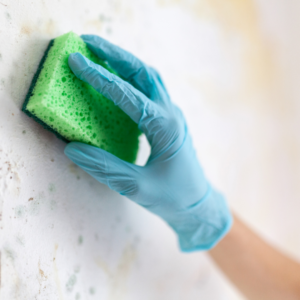
How to stop black mould – simple hints and tips – doing these small things regularly can help a lot – and they don’t cost much.
- Do not use cheap bleach sprays – They often have salts in them, which makes the mould come back even faster. Just use equal parts vinegar to water to clean mould from surfaces.
- Mould likes cold, damp places – especially on outside walls. Try not to put beds, cupboards, or furniture right up against these walls. Leave space so air can move around.
- Open windows when you can – If the weather is not too cold, let fresh air in. This helps stop mould and keeps your home healthier.
- Keep wardrobes tidy – Don’t pack them full. Leave the door open sometimes to let air flow in. This helps stop mould growing on clothes, shoes, and boxes.
- Dry off wet walls and windows – If you see water from condensation, wipe it down every day with a dry cloth. Mould can’t grow if it stays dry. Using a window vac is a good idea if there’s regularly a lot of condensation on windows.
- Dehumidifiers cost a lot to run – It’s cheaper to open windows and use natural ventilation.
- When cooking or showering:
- Keep the door closed to stop steam spreading
- If there’s a window, open it for a while afterwards to let the steam out
- When cleaning mould:
- Close the room door
- Open a window before you start
- Use a damp kitchen cloth, warm water, and a little washing-up liquid
- Wipe the mould, repeat if needed, and then dry the area with a clean cloth
- Keep the door closed and the window open to help it dry properly
- Be careful when cleaning mould – This is when mould spores are most active. Wear a face mask and keep babies or young children out of the room while cleaning.
- Don’t let mould get out of control. If you’re renting and getting worried, speak to your landlord or letting agent.
CONDENSATION
What is Condensation?
Condensation happens when warm, moist air touches a cold surface (like a window or wall). Warm air can hold more moisture (water in the air) than cold air. When it cools down, it can’t hold all the water, so it turns into tiny water droplets. These drops appear on windows, walls, tiles, and mirrors. If not wiped away, mould can grow.
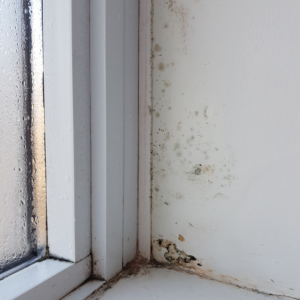
Where Condensation Happens Most
- In bathrooms and kitchens – where there’s a lot of steam
- On windows and cold walls
- Behind furniture and inside wardrobes
- In cold rooms with poor heating
- At the top of the house – warm air rises and can make upper rooms damp
Why Condensation Gets Worse
- Air can’t move around the house well (poor ventilation)
- House is shut up during the day and not heated
- Lots of steam in a short time (cooking, showers, laundry)
- Cold walls and surfaces hold moisture
- Moisture gets into walls, floors, and wood over time – this is called interstitial condensation
Controlling Condensation
✅ Check the house for problems:
- Look for leaks in the roof, walls, and gutters
- Make sure there’s a damp-proof course (a barrier in walls to stop rising damp)
- Clear wall cavities and check air bricks under floors
- Make sure solid floors are dry – if not, they may need insulation
- Fix leaking pipes or water tanks
✅ 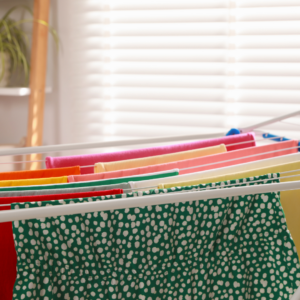 Ventilate your home:
Ventilate your home:
- Open windows when cooking, showering, or drying clothes
- Use extractor fans in bathrooms and kitchens
- Keep doors shut when making steam, but open a window in that room
- Don’t dry wet clothes inside unless the room is well ventilated
- Hang wet coats outside living areas
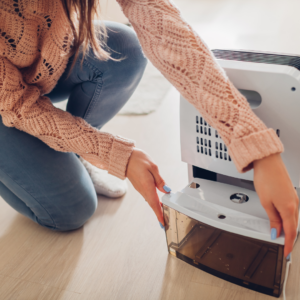 ✅ Make rooms warmer:
✅ Make rooms warmer:
- Use heating when possible
- Use dry heating (like electric heaters, not paraffin or gas)
- Add secondary glazing or double-glazing to windows
- Insulate cold walls or floors
- Use warm flooring like cork or cushioned tiles
When Mould Appears
- Act fast – mould spreads quickly
- Don’t use cheap bleach sprays – they can make mould worse
- Clean up any water spills or leaks straight away
- Wipe down windows and walls every day if they’re wet
- Keep wardrobes and cupboards open and not too full
How to Clean Mould (Safely)
✅ Safety first:
- Wear rubber gloves, a face mask, and eye protection
- Keep babies and people with health problems out of the room
- Open a window but keep the door closed
✅ Cleaning steps:
- Use a damp cloth with warm water and a little washing-up liquid
- Wipe the mould gently (don’t scrub it into the air)
- Dry the area with a clean, dry cloth
- If mould is very bad, do it again or ask for help
Cleaning After Floods or Leaks
- Dry everything as soon as possible
- Remove items that soak up water like carpets, soft furniture, clothing, etc.
- Use fans and heaters to dry rooms (don’t use fans if mould is already visible)
- Clean hard surfaces with hot soapy water and scrub them well
- Use bleach only if there was sewage – let it dry on the surface, don’t rinse
- Bag and throw away anything that can’t be cleaned
If You’re Not Sure – Ask for Help
If the problem is too big or you feel unsafe, it’s OK to ask professionals to help. You can also speak to your landlord or letting agent if you’re renting. Small steps like opening windows, wiping surfaces, and using heating can really help.
For more advice and support, please contact our Energy Advice team

